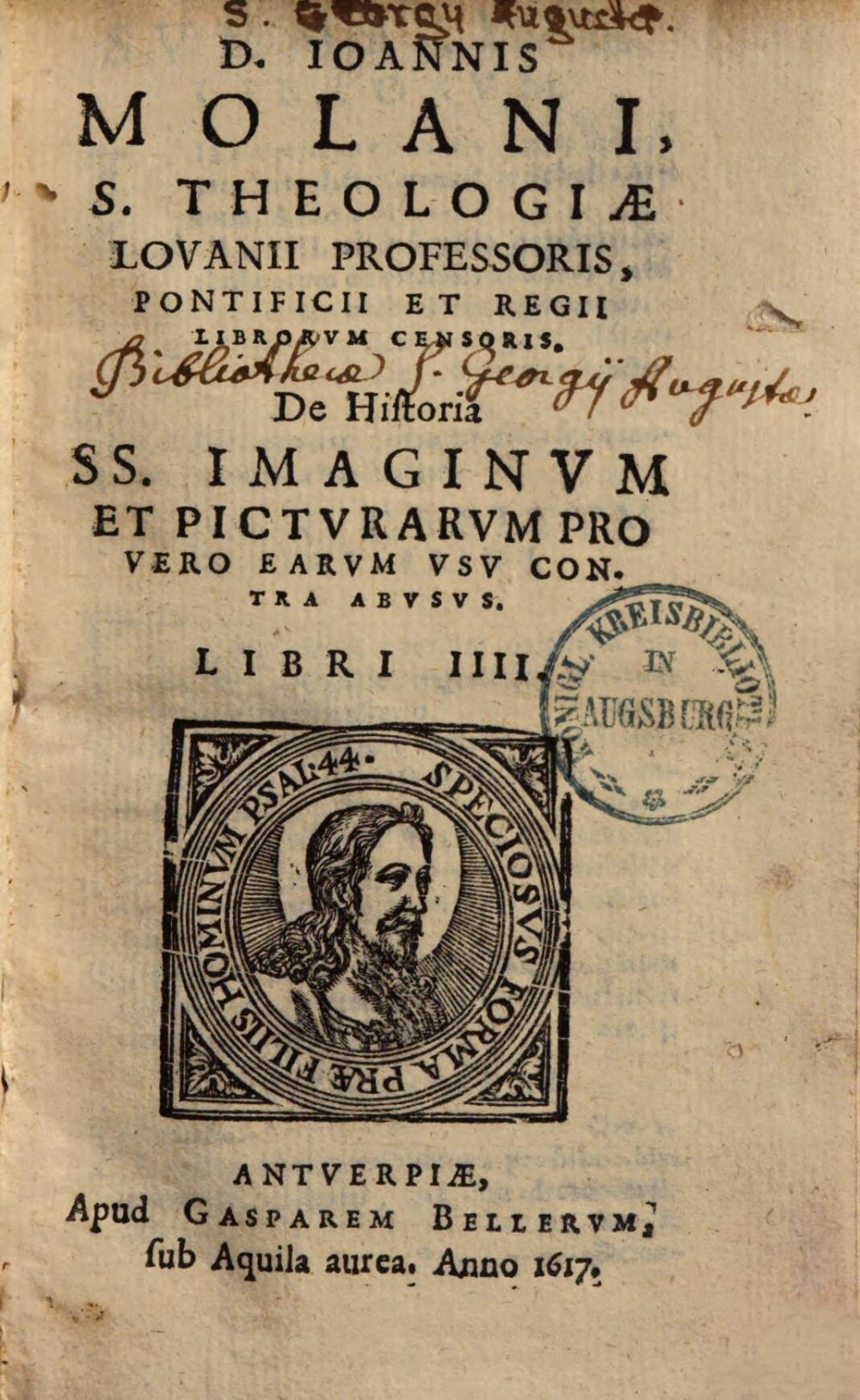
Augsburg, Staats- und Stadtbibliothek — Th H 1475. Digital Reproduction: München, Bayerische Staatsbibliothek, 2015.
In book 2 chapter 37, Molanus deals with the question of impudence in painting. For this matter, Molanus refers to the Council of Trent that ordered that all impudence in art must be avoided. This leads him to conclude that according to Molanus artists should avoid anything impudent in their artworks and that artworks containing impudent features should be adjusted or removed. In several cases, he explains how one should handle impudent artworks, the painters that made them and what impudence can look like.
The first case presented by Molanus are paintings of saints with the traits of persons that are still alive. Molanus condemns this practice as superstitious and says that it has to be eliminated and forbidden because it would provoke the mind to excite itself.
“Concerning the impudence of images, this is what the Ecumenical Council of our time says: all impudence must be avoided. Thus images should not represent provocative beauty and should not be embellished with it. Great care and diligence should be taken to ensure that nothing unruly, nothing untimely and tumultuous, nothing profane and ungodly occurs, since it is holiness to give greater honour and veneration to the images of the saints, they should be painted, sculpted, and made in such a way as to arouse ardour in the hearts of men, any obstacle due to the absence of serious contemplation being removed. One sometimes sees, in certain places where they should not have been accepted, images of saints bearing the face and features of men still living; and under cover of this subterfuge, the eyes feast upon the portrait of those whom one loves. This superstition must be eliminated and forbidden, for it is a pestilence which provokes the mind to excite itself. Indeed, to abuse images in this way is fatal.”
“Quod ad Iasciuiam attinet picturarunt sic de ea statuit nostri temporis Oecumenica Synodus, Omnis denique lascivia vitetur, ita ut procaci venustate Imagines non pingantur nec ornentur. Tanta circa haec diligentia et cura adhibeatur, ut nihil inordinatum aut praepostere et tumultuarie accommodatum, nihil prophanum nihilque inhonestem appareat, cum domum Dei deceat sanctitudo. Ut ergo sacris Divorum imaginibus honor et veneratio maior impendatur, oportet eas sic depingi, sculpi et effigiari, ut quosdam velut igniculos in hominum pectoribus succendant, quod contuentium oculos offendere queat, offendiculo sublato. Visae quandoque sunt in locis ubi non decuit Divorum imaginem viventium adhuc hominum ora vultusque referre, ut hoc umbraico velamento illorum quos amabant effigie pascerent oculos. Hic fucus eliminari prohiberique debet, velut pestiferum illecebrosae cogitationis irritamentum. Nam adhunc modum imaginibus abutinefarium est.”
Molanus 1996, 228-229.



